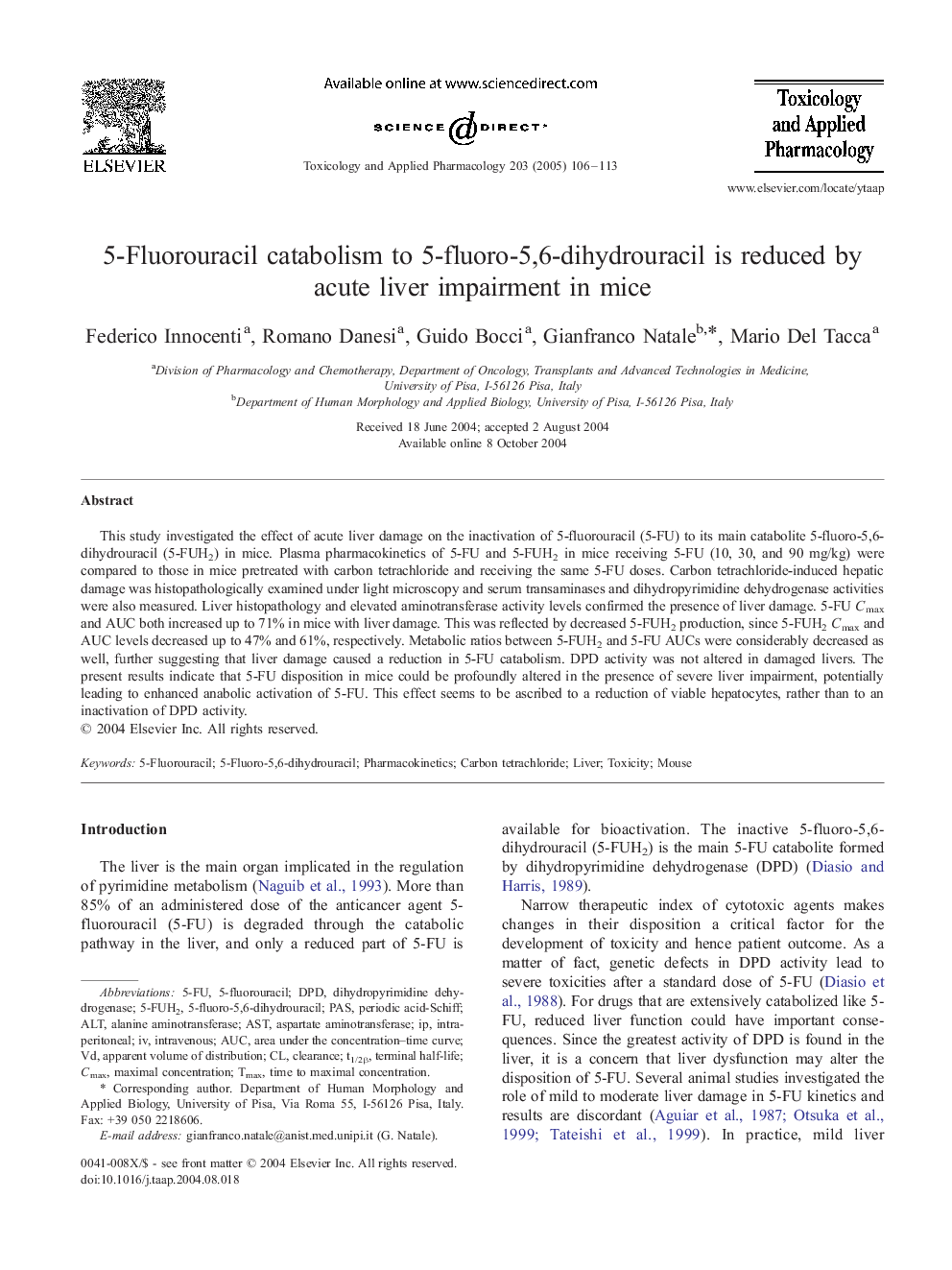| Article ID | Journal | Published Year | Pages | File Type |
|---|---|---|---|---|
| 9018411 | Toxicology and Applied Pharmacology | 2005 | 8 Pages |
Abstract
This study investigated the effect of acute liver damage on the inactivation of 5-fluorouracil (5-FU) to its main catabolite 5-fluoro-5,6-dihydrouracil (5-FUH2) in mice. Plasma pharmacokinetics of 5-FU and 5-FUH2 in mice receiving 5-FU (10, 30, and 90 mg/kg) were compared to those in mice pretreated with carbon tetrachloride and receiving the same 5-FU doses. Carbon tetrachloride-induced hepatic damage was histopathologically examined under light microscopy and serum transaminases and dihydropyrimidine dehydrogenase activities were also measured. Liver histopathology and elevated aminotransferase activity levels confirmed the presence of liver damage. 5-FU Cmax and AUC both increased up to 71% in mice with liver damage. This was reflected by decreased 5-FUH2 production, since 5-FUH2Cmax and AUC levels decreased up to 47% and 61%, respectively. Metabolic ratios between 5-FUH2 and 5-FU AUCs were considerably decreased as well, further suggesting that liver damage caused a reduction in 5-FU catabolism. DPD activity was not altered in damaged livers. The present results indicate that 5-FU disposition in mice could be profoundly altered in the presence of severe liver impairment, potentially leading to enhanced anabolic activation of 5-FU. This effect seems to be ascribed to a reduction of viable hepatocytes, rather than to an inactivation of DPD activity.
Related Topics
Life Sciences
Environmental Science
Health, Toxicology and Mutagenesis
Authors
Federico Innocenti, Romano Danesi, Guido Bocci, Gianfranco Natale, Mario Del Tacca,
